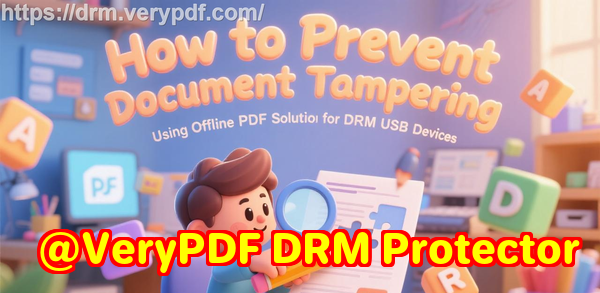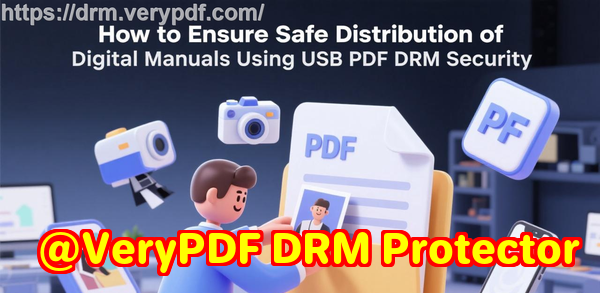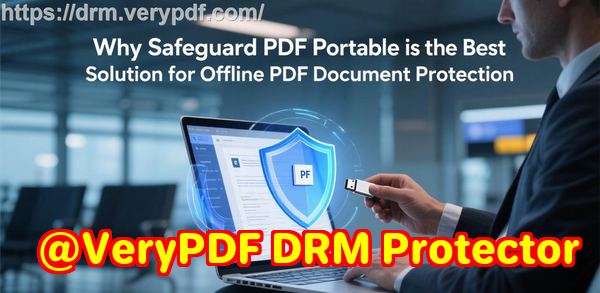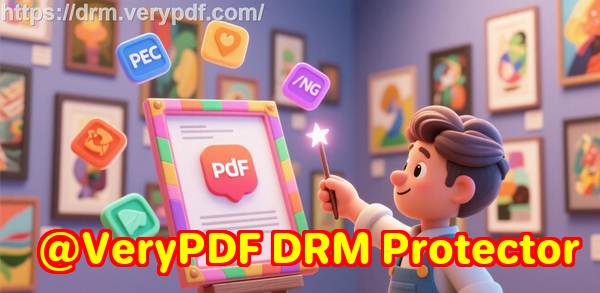VeryPDF DRM Protector Features That Ensure Secure Offline Document Distribution via USB Without Internet
Every time I’ve had to prepare sensitive documents for a client meeting, I’ve faced the same headache: how do I make sure these PDFs don’t leak, get copied, or end up in the wrong hands? Traditional file-sharing systems always felt risky. I remember last year, I tried sending a set of confidential contracts via email, only to realize the passwords could be easily shared or guessed. That’s when I discovered VeryPDF DRM Protector, a tool that completely changed how I handle document security.
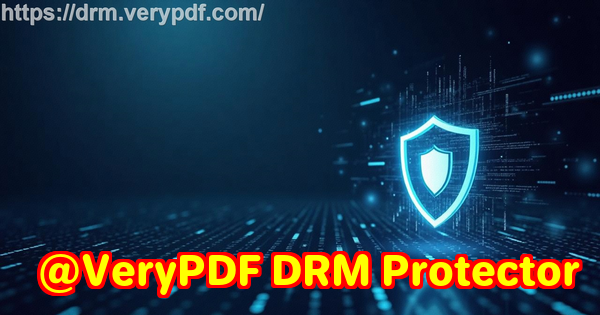
It’s designed for people like meprofessionals who need to share PDFs securely offline, without relying on cloud services or internet access. Think legal teams, financial consultants, researchers, or corporate trainers who often distribute sensitive material in meetings, workshops, or external events. The software ensures that no matter where the PDF goesUSB stick, laptop, or shared deviceits security controls stay intact.
How I Started Using VeryPDF DRM Protector
I first stumbled upon VeryPDF DRM Protector when a client asked me to prepare a batch of financial reports for distribution at a seminar. I needed a solution that would let me share the documents via USB, without worrying about internet access or unlicensed copying. Setting it up was surprisingly easy. I uploaded my PDFs, customised the security settings, and generated protected files ready to distribute.
What sets this tool apart is its focus on external document sharing. Unlike other PDF protections that simply password-lock a file, VeryPDF lets you control how, when, and where the document is used. For example, I could:
-
Prevent copying and editing: No more worrying about someone highlighting, copying, or changing critical content.
-
Restrict printing: I can either block printing entirely or limit the number of prints per user. Each printed page comes with a dynamic watermark showing the user’s name and timestamp, which is a game-changer for accountability.
-
Device and location locks: The PDFs I shared were tied to specific USB drives and could only be accessed on authorised devices, preventing accidental distribution.
Key Features That Make Life Easier
-
Offline Secure Sharing via USB
One of my favourite features is Safeguard Portable. I can package protected PDFs onto a USB drive with a built-in secure viewer. No internet is needed, yet every document remains fully protected. During a recent workshop, I handed participants USB drives, and they could open the documents instantly. Meanwhile, I knew the files were protected against sharing, printing, and copying.
-
Automatic Expiry and Revocation
Another standout feature is automatic expiry. I can set documents to:
-
Expire after a fixed date
-
Expire after a number of days
-
Expire after a certain number of views or prints
In practice, this meant I could send sensitive marketing strategies to partners, knowing they would self-expire after the presentation. I’ve also had to revoke access for a partner who left a project; it took a few clicks to instantly lock all their documents. No other PDF solution I’ve used made this so seamless.
-
-
Dynamic Watermarking and Logging
Every document I’ve distributed with VeryPDF comes with dynamic watermarks. For example, if Amy from finance opens a report, her name, date, and device info appear on every page. Beyond discouraging leaks, it makes tracing any unauthorized activity trivial. The software also logs views and prints, giving me a full audit trailsuper handy for compliance purposes.
-
Mobile-Friendly and Cross-Platform Access
While my primary use is offline USB distribution, I’ve occasionally had to share documents online. VeryPDF handles this elegantly. The secure web viewer ensures files are accessible on any device without compromising security, and email invites can include a QR code for quick mobile access. It’s perfect for teams that sometimes need online access but still want the control that DRM provides.
Comparing With Other Tools
I’ve tried standard PDF password protection and some online DRM tools, but none of them come close:
-
Adobe passwords: Easy to bypass if someone shares the password.
-
Secure cloud file rooms: Great online, but not offline; you lose control if the files are downloaded.
-
Other DRM solutions: Often clunky, require additional software installs, or fail to enforce offline restrictions.
VeryPDF’s approach feels bulletproof. By locking documents to devices and using US government-grade encryption, I can confidently distribute files externally, even in high-stakes situations.
Use Cases That Hit Close to Home
I’ve found VeryPDF DRM Protector perfect for multiple scenarios:
-
Client Meetings and Workshops: Distribute financial reports or training material on USB without worrying about leaks.
-
Legal Teams: Send contracts or case files securely to external counsel or co-counsels.
-
Corporate Trainers: Distribute presentation material offline, ensuring participants can’t share it further.
-
Content Publishers: Sell digital documents while preventing piracy and unauthorized distribution.
Every time I use it, I feel a level of control I didn’t have with traditional tools. It’s especially handy when internet connectivity is unreliable or you want to keep sensitive content completely offline.
Conclusion: Why I Recommend VeryPDF DRM Protector
If you handle sensitive PDFs, whether in finance, legal, education, or publishing, VeryPDF DRM Protector solves real-world problems that go beyond basic password protection. It keeps your documents secure offline, restricts sharing and printing, tracks usage, and even lets you revoke access instantly. I can’t overstate how much time and stress this saves, especially when preparing for meetings, workshops, or distributing intellectual property externally.
I’d highly recommend this to anyone who deals with large volumes of sensitive PDFs and needs secure external distribution without relying on the internet.
Click here to try it out for yourself: https://drm.verypdf.com/
Custom Development Services by VeryPDF
VeryPDF offers flexible custom development services tailored to your technical requirements. From Linux, macOS, Windows, and server environments to specialised utilities in Python, PHP, C/C++, Windows API, Linux, Mac, iOS, Android, JavaScript, C#, .NET, and HTML5, VeryPDF can build tools to fit your workflow.
Their expertise covers Windows Virtual Printer Drivers, document capture and monitoring, system-wide API hooks, PDF, PCL, PRN, Postscript, EPS, Office file processing, barcode recognition, OCR table extraction, report generation, image and document management, cloud-based solutions, PDF security, DRM protection, and TrueType font handling.
For custom solutions, contact VeryPDF support: https://support.verypdf.com/
FAQ
1. Can VeryPDF DRM Protector work completely offline?
Yes, using Safeguard Portable, you can distribute protected PDFs on USB sticks with no internet connection needed.
2. Can I control who prints or views my PDFs?
Absolutely. You can limit views, restrict printing, and watermark each page dynamically to track usage.
3. Can I revoke access to a PDF after distribution?
Yes, you can revoke access for all users or specific individuals instantly, even if the document is on their device.
4. Does it work on mobile devices?
Yes, the web viewer is mobile-friendly and email invites include QR codes for easy access.
5. How secure are the documents?
VeryPDF uses strong US government-grade encryption, device and location locks, and dynamic watermarks to protect content against leaks and piracy.
Tags or Keywords
-
Secure PDF sharing
-
Offline PDF distribution
-
USB document protection
-
Document DRM software
-
VeryPDF DRM Protector
-
PDF watermarking
-
Document expiry management
-
External document security
This solution is a game-changer for anyone serious about offline document security, providing full control over who accesses your PDFs and how they are used.

